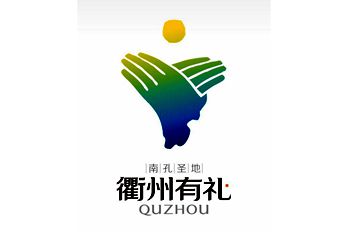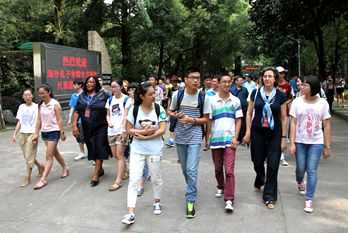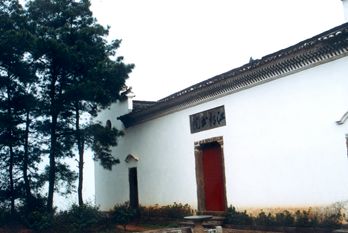Why Doolittle Raid a testimony of enduring friendship between Chinese and American people?

Five Doolittle raiders pose for a photo after they were rescued by Chinese people in Quzhou, Zhejiang Province. [Photo provided to chinadaily.com.cn]
Liao Mingfa, an 88-year-old man living in Jiangshan county, Quzhou, East China's Zhejiang Province, still remembers that on April 19, 1942, when he was a little boy, his father, Liao Shiyuan, rescued a foreign man in the local mountains.
"That was a man with a long nose, red hair, and was very tall. Some villagers discovered him in the mountains and reported to my dad (who was the then village leader). My dad, along with four other villagers, went to rescue him. They took him back to home at around 9 pm. My dad guessed he was probably an American," Liao Mingfa recalled.
Despite not knowing the man's identity or why he had appeared in a small mountain village thousands of miles away in China, Liao Mingfa's parents took good care of the mystery foreign guest, cleaning his wounds and treating him with medical herbs.
At a time when Chinese people were facing tough living conditions, members of the Liao family also tried their best to treat the guest as best as they could. They would specially cook riceor eggs for the wounded guest while they themselves just ate corn paste."At first, he dared not eat the egg my mother cooked for him; he relaxed and started eating only after my father took a bite," Liao Mingfa recalled.
The mystery American the Liao's family rescued turned out to be Lieutenant Charles J. Ozak (1916-2010). He was one of the 80 Doolittle Raiders who launched America's first airstrike on Tokyo, on April 18, 1942, in retaliation for Japan's attack on Pearl Harbor.
The mission, led by Doolittle, marked the first successful US military bombing on Japanese soil during World War II, targeting Tokyo and four other cities.
The film Thirty Seconds Over Tokyo produced by American film company MGM in 1944 detailed the arduous process of the Doolittle Raid. However, compared with the initial target to bomb Tokyo, the real challenge of the raid lay in the second half of the journey - landing in China.
According to Zheng Weiyong, a local history researcher who spent 20 years studying the Doolittle Raid's history in Quzhou, the planes were supposed to land in Quzhou airport, but had to make emergency landings in the mountains and waters near the airport due to various unexpected conditions such as loss of communication and low fuel.
The American movie Midway released in 2019 features this dramatic landing scene.
In the pitch-black night, a plane shook violently in the storm, with a flashing red light warning of critically low fuel. After repeated unanswered calls to airport ground control, Colonel Doolittle made a difficult decision - to parachute out and abandon the aircraft.
"I don't know if the land below belongs to the Chinese or the Japanese, so everyone be careful. Let's meet in Quzhou..." Doolittle encouraged his comrades before ejecting from the aircraft.
Fifteen of the 16 B-25 bombers that had participated in the Tokyo air raid crashed into the sea and the mountainous areas of East China's Jiangxi, Zhejiang, Anhui, and Fujian provinces, leading to a massive rescue operation by Chinese people.
Among the 75 raiders on the 15 planes, 64 were rescued by Chinese people.
The strange tall men who suddenly fell from the sky did scare the villagers at the beginning. However, after learning that they were American pilots who were fighting the Japanese, no effort was spared to protect and take care for them as well as help to reunite with their team.
After spending four days in the Liao household, Ozak was transported by local villagers to an air force base in Quzhou. The villagers carried him along the 30-kilometer route across rugged terrain. Another 50 rescued pilots were also assisted in making their way to the base and, together, they were transported to Chongqing.
Another pilot Major Ted William Lawson (1917-1992) suffered severe injuries when he fell into the area abutting the sea in Quzhou. On a boat, villagers transported him across the enemy ship blockade line to send him to the nearby hospital for amputation surgery, risking their own lives to save Lawson's.
However, what these pilots did not expect was that, after their departure, the Japanese army would launch a brutal attack in Zhejiang and Jiangxi provinces in retaliation. The month following the raid saw the relentless bombing of Quzhou airport and a brutal campaign of germ warfare in the city, leading to an estimated 250,000 deaths according to reports.
A treasured history
Doolittle Raid survivors and their descendants have not forgotten the efforts of the Chinese people.
On the 50th anniversary of the Doolittle Raid, Doolittle wrote a letter expressing gratitude to the Chinese rescuers: "On behalf of all members of the Doolittle Bomber Squadron Association, I sincerely appreciate our Chinese friends - those who risked their own lives and the lives of their families to rescue and take care of us!" according to materials provided by the Information Office of Quzhou government to the Global Times.
In 1990, a delegation composed of surviving Doolittle Raider veterans, visited Zhejiang to express their gratitude. Wherever they went, the delegation presented a commemorative bronze plaque engraved with the Chinese characters "duoxie" (Thank You), along with the signatures of the 44 surviving Doolittle veterans at that time.
China also remembered these old friends. In September 2015, Jeff Thatcher, the son of David J. Thatcher (1921-2016), another participant in the Doolittle Raid who was rescued by Chinese people, was invited to China on behalf of his father to attend the commemoration of the 70th anniversary of the Chinese People's War of Resistance against Japanese Aggression (1931-45) and the World Anti-Fascist War. He followed in his father's footsteps and paid a visit to Quzhou.
In 2018, the Doolittle Raid Memorial Hall opened in Quzhou. In October that year, a delegation of 24 members from the Children of Doolittle Raiders visited Quzhou to participate in the opening ceremony.
In his speech at the opening ceremony, Thatcher said, "Today, this exquisite building in front of us is a witness to the hardships endured by our ancestors and a symbol of cooperation and friendship between China and the US since April 18, 1942. We hope that the Doolittle Raid Memorial Hall can become an educational base for visitors, allowing more people to understand how 80 brave American pilots and thousands of brave Chinese people united together."
As they walked through the memorial hall, the eyes of the Doolittle raiders' children were gradually filled with tears. Susan Ozak, daughter of Charles J. Ozak, knelt in front of a photo and pointed to a soldier with trembling hands, saying, "Look, this is my father. Thank you for helping me understand my father better."
As a symbol of her gratitude to the Liao family, Susan Ozak donated $15,000 during her stay in Quzhou in 2018 to help renovate and preserve the old Liao house, where her father once lived for four days.
After learning that the renovation program had been completed in September 2023, Susan sent a video to the Quzhou government to express her gratitude again to the Chinese people. "I am grateful that this project was recently completed. By making this donation, I want to show the people of Jiangshan and of China my deep appreciation for all they did to help the Doolittle raiders during the war. Thank you!"
Susan also established a friendship with Liao Mingfa. "I hope she can come back to have a look every year. I am 88 this year, I hope I can still see her when I am 120," Liao Mingfa said.
Doolittle's friend Bryan Moon (1928-2015), former vice president of Northwest Airlines, was also dedicated to investigating Doolittle raiders' history in China for many years. In September 1990, he organized a 5-person inspection team to visit Zhejiang and Anhui to look for the Chinese people who had participated in the rescue.
Thanks to his efforts, the state of Minnesota, which had modified the Doolittle Raid's bombers, intersected with Quzhou. In 1994, Quzhou and the city of Red Wing in Minnesota became sister cities, marking a new era of friendship between American pilots and Chinese farmers.
Nowadays the young generation has taken on the mission of exchanges between the two places. In the last 30 years, Quzhou and Red Wing have exchanged delegations many times, with more than 200 people, including 30 teachers visiting to each other's schools and 13 artists having taken part in artistic exchanges.
Pan Zhiqiang, a former teacher and principal of the Quzhou No.2 High School, was the first exchange teacher from Quzhou to visit Red Wing. "At that time, overseas understanding of the Doolittle Raid was only limited to the event itself and few knew about the Chinese people's contribution to the action." During Pan's stay, schools in Red Wing added a course called "China," and a seed of mutual understanding was quietly planted in the two places across the ocean.
An enduring friendship
This history caught the public's attention after Chinese President Xi Jinping mentioned it in his speech at a welcome dinner for the APEC, on November 15, in San Francisco. He referred to it as a vivid example to demonstrate that "the foundation of China-US relations was laid by our peoples."
After Japan attacked Pearl Harbor, the US sent 16 B-25 bombers on an air raid to Japan in 1942. Running low on fuel after completing their mission, Lieutenant Colonel James Doolittle and his fellow pilots parachuted in China. They were rescued by Chinese troops and local civilians. But some 250,000 civilian Chinese were killed by Japanese aggressors in retaliation, Xi introduced.
The American people, on their part, always remember the Chinese who risked their lives to save American pilots. Offspring of those American pilots often visit the Doolittle Raid Memorial Hall in Quzhou of Zhejiang Province to pay tribute to the Chinese people for their heroic and valorous efforts. These stories fill me with firm confidence that the friendship between our two peoples, which has stood the test of blood and fire, will be passed on from generation to generation, Xi stressed.
Due to his research on the Doolittle Raid, the local history researcher Zheng Weiyong has also become a friendship ambassador between China and the US. He has been invited multiple times by the Doolittle Raiders Association to participate in commemorative events in the US.
Looking back on the numerous journeys across the Pacific Ocean and the experience of traversing history and the present, Zheng deeply feels that as long as people stand together and overcome difficulties, and follow the trend of peace, development, cooperation, and a win-win spirit, the future of China and the US will surely be bright.
The Doolittle Raid is an important manifestation of China-US cooperation during World War II. It extends to the present, when we are still working for world peace and economic development. The presentation of historical artifacts is not to commemorate the war, but to celebrate humanitarianism and keep history "alive" and ensure it is passed down.

 City brand logo - fist-and-palm salute
City brand logo - fist-and-palm salute Confucianism on campus
Confucianism on campus The culture of the academy
The culture of the academy